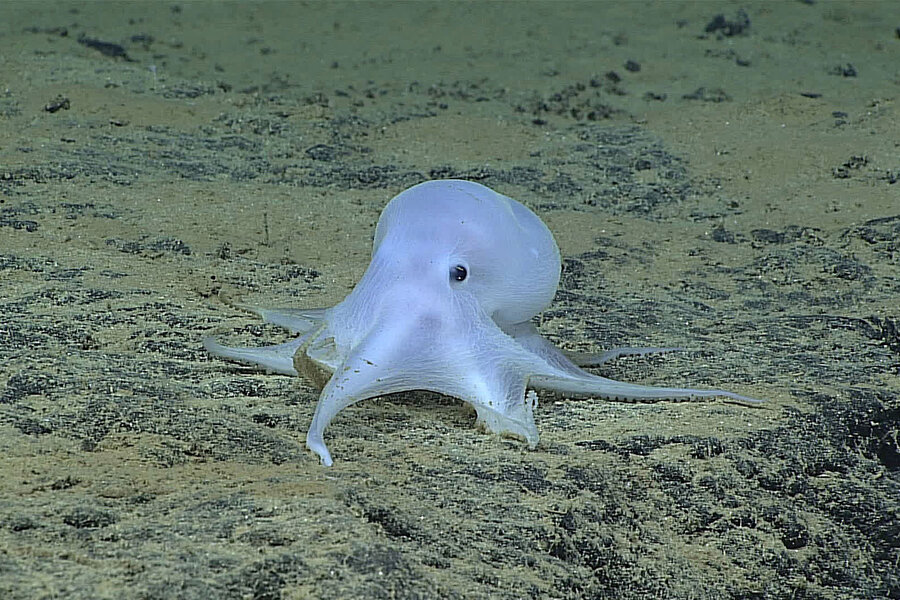Adorable 'ghost-like' octopus spotted on sea floor near Hawaii
Loading...
For a team of federal researchers looking for geologic data on the ocean floor, the pale, ghostly appearance of a unique octopus species inspired diverse reactions.
"That animal is not in the ... guide," said a researcher during the live-feed video from the NOAA Office of Ocean Exploration and Research. "In the immortal words of Taylor Swift, I have never – like ever – seen that one."
They found the well-armed sea creature, believed to be a new species of octopus, sitting on flat rock 4,000 meters (13,123 feet) below sea level near Hawaii, Michael Vecchione, a National Oceanic and Atmospheric Administration (NOAA) zoologist, wrote in a statement.
"This animal was particularly unusual because it lacked the pigment cells, called chromatophores, typical of most cephalopods, and it did not seem very muscular," Mr. Vecchione wrote. "This resulted in a ghostlike appearance, leading to a comment on social media that it should be called Casper, like the friendly cartoon ghost."
Vecchione saw what he called a "remarkable little octopod" while monitoring the video feed from the remotely operated vehicle Deep Discover, which launched from the NOAA's only federally funded vehicle for deep-sea research, the ship Okeanos Explorer, Christine Dell'Amore reported for National Geographic.
"I knew it didn’t look like anything that’s been documented in the scientific literature," Vecchione told National Geographic.
The octopod's suckers were arranged in one, rather than two series along its arms, and it had no fins, both characteristics generally reserved for shallow-water octopuses. Its pale appearance and lack of muscle, probably because so little food is available at those depths, are representative of its deep-water home. The creature did have eyes, however.
"When the sub got up close to it, it started climbing away, either reacting to lights of the sub or vibrations of the water," Vecchione told National Geographic.
Researchers suspect that the octopus represents a new species, and possibly a new genus as well, but it is not the first such discovery by the Okeanos Explorer, nor even the first octopus. At the end of a 2014 mission, the remotely operated Deep Discoverer caught a purple dumbo octopus on camera just as it was preparing to end its dive, Kasey Cantwell wrote in a NOAA blog post.
Most scientists who work with the Okeanos missions remain on-shore, but participate in research via live-feeds from ship, as did Vecchione. On its current mission, geologists have been keen to study the intact lava flows that formed the islands of Hawaii from their base, and zoologists have been rewarded by sightings of deep-sea coral, sponges, a dandelion siphonophore, and even a white tip shark, according to the ship's log.
This particular mission began Feb. 26 and concludes on March 18, and is the first deep-water dive in 2016. The crew aims to explore the Papahānaumokuākea Marine National Monument to gather baseline research for conservation, deep-sea mining, and understanding of the potential US Extended Continental Shelf. The Okeanos Explorer's ongoing purpose is to improve the nation's use of the oceans by improving its knowledge of them.
"Resource managers cannot manage what they do not know," according to the NOAA.








